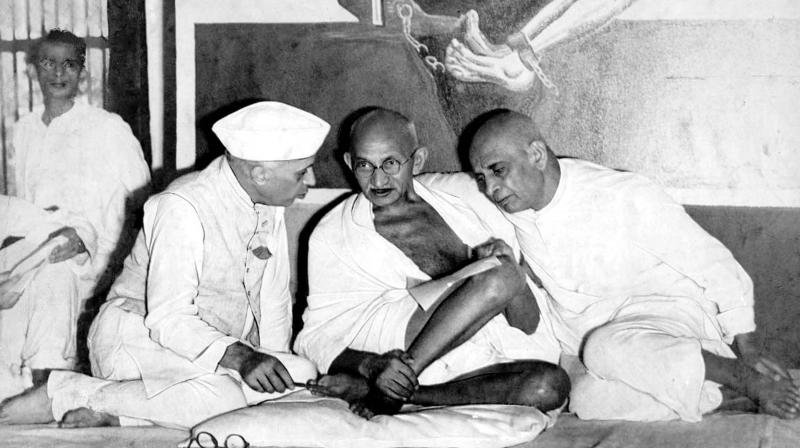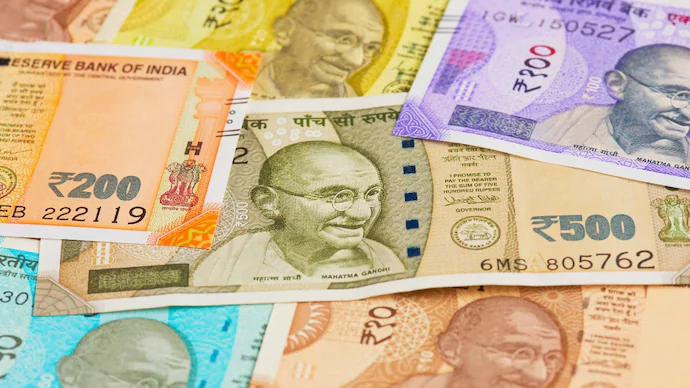Shocking Truth: Why Mahatma Gandhi Wasn’t the First Choice for Indian Currency Notes
Mahatma Gandhi, the iconic leader of India’s independence movement, has long been synonymous with Indian currency. His portrait, which graces all denominations of Indian rupee notes, is so familiar that many believe he was the natural and first choice for this honor. However, the truth is far more surprising. When India gained independence in 1947 and began issuing its own currency, Gandhi wasn’t the immediate choice for the face of its banknotes. Instead, a variety of other figures, symbols, and designs were initially considered and even used before Gandhi’s iconic image came to dominate Indian currency. This article delves into the historical journey of Indian banknotes, shedding light on why Gandhi was not the first choice and what influenced the decision to eventually feature him on every note.
The History of Indian Currency Pre-Gandhi

Before India gained independence from British rule in 1947, the currency used in the Indian subcontinent was governed by the colonial authorities. The paper currency system in India had its origins in the late 19th century, with the Paper Currency Act of 1861, which gave the British colonial government the exclusive right to issue paper money. The designs on these early notes were primarily influenced by British symbols, such as Queen Victoria’s portrait, and later, the King of England.
After World War I, Indian currency began to feature national symbols and motifs more prominently. The Reserve Bank of India (RBI), established in 1935, issued its first set of banknotes that same year, which bore the portrait of King George V, emphasizing British imperial authority. When King George VI took the throne, his portrait also adorned Indian notes until India gained independence.
Post-Independence Currency: National Identity at Stake

When India became independent in 1947, the newly established Indian government faced the enormous task of building a national identity. Currency, an everyday object used by millions, became one of the key tools for this endeavor. The government and the Reserve Bank of India began the process of designing new banknotes that would reflect the country’s independence and its diverse heritage.
Initially, India did not settle on Gandhi’s image for its currency. Instead, the first series of independent India’s banknotes continued to feature King George VI. However, this was a temporary measure as the government worked on new designs. By 1949, the notes featuring the monarch were replaced, but surprisingly, Gandhi was still not the figure chosen to grace these notes.
The Symbolism of Ashoka and Ancient India

One of the first significant post-independence designs for Indian currency was the use of the Ashoka Pillar. The Ashoka Pillar, a national emblem of India, features four lions standing back to back and symbolizes power, courage, and confidence. It has deep historical and cultural significance, as it dates back to the rule of Emperor Ashoka, one of India’s most revered ancient kings who helped spread Buddhism across Asia. This emblem was a natural choice for the newly independent nation, as it symbolized both India’s ancient past and its modern aspirations.
In fact, in the 1950s, the Ashoka Pillar was a predominant feature on Indian currency. The early notes issued by independent India depicted scenes from agriculture, industry, and other sectors reflecting India’s economic priorities, with the Ashoka emblem taking center stage. Gandhi’s face was noticeably absent during these early years of independent Indian banknotes.
Competing Figures for the Currency

Before Gandhi became the face of Indian banknotes, there were several discussions about who should represent the new nation. India’s history is rich with notable figures, and several contenders were considered:
- Subhas Chandra Bose, the revolutionary leader, was an early figure of great prominence, especially among those who admired his radical approach to freedom.
- Rabindranath Tagore, the renowned poet and Nobel laureate, was also a candidate due to his contributions to India’s cultural and intellectual awakening.
- Jawaharlal Nehru, India’s first Prime Minister, was another influential figure in shaping the direction of post-colonial India.
There was even a brief consideration of featuring B.R. Ambedkar, the chief architect of the Indian Constitution, who played a key role in shaping the country’s social and political landscape.
In addition to individuals, other ideas involved featuring symbols of India’s natural beauty and cultural heritage on currency. Scenes from the Indian independence struggle, such as the Salt March, were also considered as potential designs for banknotes.
Gandhi’s Journey to Indian Currency

Mahatma Gandhi’s absence from early Indian currency is surprising given his immense role in India’s struggle for independence. So why wasn’t Gandhi the immediate choice for the currency notes of independent India?
One explanation is that the government initially wanted to distance itself from any single individual or figure. The idea was to project India as a secular, unified nation that transcended individual leaders and personalities. This is why symbols like the Ashoka Pillar and other national emblems were chosen to represent the spirit of the new nation.
However, Gandhi’s legacy continued to grow even after his assassination in 1948. His philosophy of non-violence, his role as the leader of the Indian independence movement, and his image as a unifying figure for the diverse country made him an undeniable symbol of Indian identity. Over time, it became clear that Gandhi’s image was powerful, unifying, and reflected the values of the newly independent India.
The Decision to Feature Gandhi

It wasn’t until the late 1960s and 1970s that discussions about featuring Gandhi on currency began to gain traction. By this time, Gandhi’s stature as a global icon of peace and non-violence had been cemented. India had also gone through a tumultuous period of wars with Pakistan and China, and internally, the country was facing economic challenges. There was a growing sentiment that Gandhi’s image could inspire a sense of unity and national pride.
The first Indian banknote to feature Mahatma Gandhi was issued in 1987. It was a 500-rupee note, which depicted a portrait of Gandhi based on a photograph taken in 1946 by an unknown photographer. This note marked the beginning of the Mahatma Gandhi Series of banknotes, which would eventually include all denominations.
The decision to use Gandhi’s image on Indian currency was driven by several factors. Firstly, Gandhi was widely recognized, both within India and internationally. Secondly, his image was seen as representing India’s ethical and moral ideals. Gandhi’s philosophy of non-violence and simplicity resonated deeply with the values that the post-independence government wanted to project.
The Complete Shift to the Gandhi Series

By the early 1990s, the RBI began phasing out older notes that didn’t feature Gandhi’s image, replacing them with what is now known as the Mahatma Gandhi Series. This series includes denominations ranging from ₹10 to ₹2,000. Each note in this series has a consistent design featuring Gandhi’s portrait on the front, along with various symbols of India’s cultural and technological achievements on the reverse.
The Mahatma Gandhi Series, introduced in 1996, was designed to be more secure and harder to counterfeit. It became the definitive series of banknotes in circulation, solidifying Gandhi’s place as the face of Indian currency.
Why Was Gandhi Ultimately Chosen?

Mahatma Gandhi’s selection for Indian currency was not merely a reflection of his role in the independence movement but also a symbol of the values he championed. Gandhi’s principles of non-violence, truth, and self-reliance were seen as the guiding ideals for post-colonial India. His global recognition also made him the perfect ambassador for India on a symbol as widely used as currency.
In addition to these philosophical reasons, Gandhi’s image also served practical purposes. His instantly recognizable face made Indian currency easily distinguishable, which helped with security measures against counterfeiting.
Conclusion: The Iconic Face of Indian Currency

The journey of Indian currency notes, from the days of colonial rulers to independent India, reflects the country’s evolving national identity. While Mahatma Gandhi may not have been the immediate or obvious choice for the first currency notes, his eventual selection has made him the enduring symbol of India’s currency system.
The choice to feature Gandhi wasn’t just about honoring his role in the independence struggle but also about projecting India’s core values of peace, unity, and moral strength. Today, Gandhi’s face on every Indian banknote serves as a reminder of the nation’s journey from colonialism to independence and its ongoing pursuit of truth and justice.


